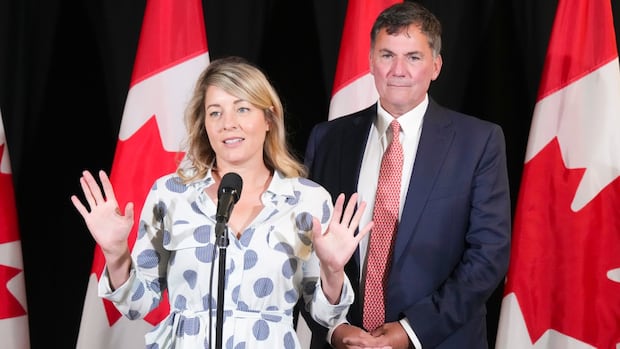PM Carney’s smaller cabinet is facing pushback from advocacy groups

Canada’s new Prime Minister, Mark Carney, is facing criticism from advocacy groups upset that ministers solely dedicated to their issues are no longer around the cabinet table. Carney announced his slate of 23 ministers on Friday, describing it as a much smaller cabinet focused on protecting workers during a trade war and building the economy during a moment of crisis.
Rabia Khedr, the national director of Disability Without Poverty, believes that Carney prioritized his election strategy by dropping a series of titles from his cabinet. She stated, “I think it’s a political strategy. It’s a strategic decision to get rid of anything that has to do with equity, diversity, and inclusion in the forefront.”
After being sworn in, Carney emphasized that his cabinet is leaner and focused on the most important issues facing Canadians during this critical moment. However, the absence of titles such as women, gender equality, youth, official languages, diversity, inclusion, persons with disabilities, and seniors from his ministers has raised concerns among advocacy groups.
Carney consolidated these portfolios under other ministers’ responsibilities. For example, Steven Guilbeault was given an expanded role called “Canadian culture and identity, Parks Canada, and Quebec lieutenant,” which includes women and gender equality along with official languages. Similarly, Minister of Jobs and Families, Steven MacKinnon’s portfolio includes seniors and persons with disabilities.
Advocacy groups, including over 200 organizations, are demanding the reinstatement of dedicated ministerial positions to ensure that their issues are championed around the cabinet table. The absence of specific ministerial roles has raised concerns about the government’s commitment to addressing issues related to women, gender equality, youth, official languages, diversity, inclusion, persons with disabilities, and seniors.
While Carney’s office defends the consolidated cabinet roles, advocacy groups argue that folding these portfolios under other ministers undermines decades of work in promoting equality and diversity. They fear that triaging priorities among multiple portfolios may lead to certain issues being neglected.
Former Liberal national campaign director, Michele Cadario, suggests that the impact of restructuring a government with a smaller cabinet should be assessed based on budget allocations rather than the names sitting around the table. She emphasizes the importance of prioritizing issues through budget allocations to determine the government’s commitment to addressing key concerns.
In conclusion, the controversy surrounding Canada’s new cabinet reflects the challenges of balancing ministerial responsibilities and addressing the diverse needs of Canadians. Advocacy groups continue to push for dedicated ministerial positions to ensure that their issues are given the attention they deserve in the decision-making process.




